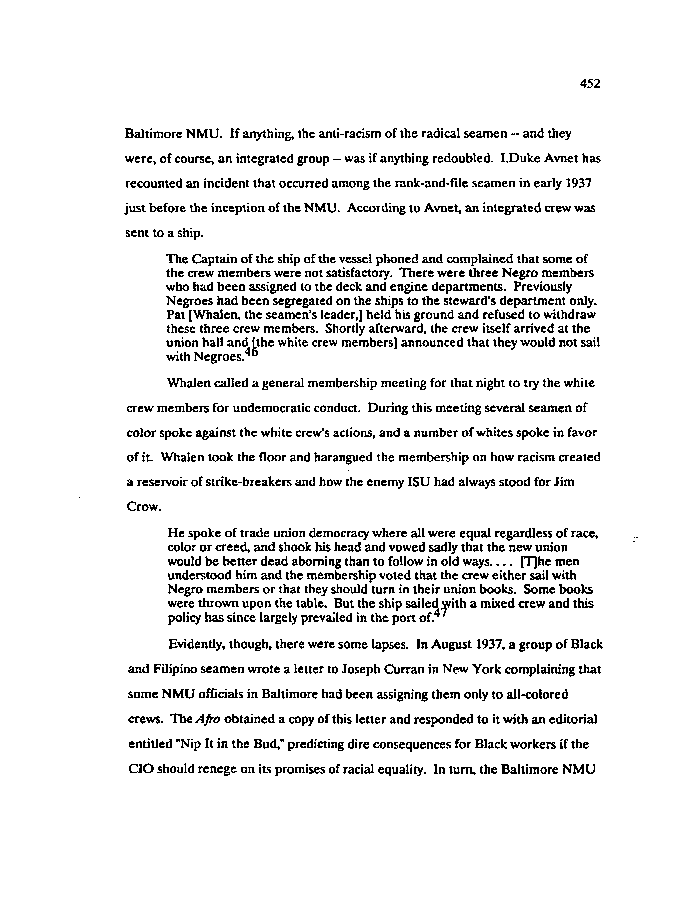|
452
Baltimore NMU. If anything, the anti-racism of the radical seamen — and they
were, of course, an integrated group - was if anything redoubled. I.Duke Avnet has
recounted an incident that occurred among the rank-and-file seamen in early 1937
just before the inception of the NMU. According to Avnet, an integrated crew was
sent to a ship.
The Captain of the ship of the vessel phoned and complained that some of
the crew members were not satisfactory. There were three Negro members
who had been assigned to the deck and engine departments. Previously
Negroes had been segregated on the ships to the steward's department only.
Pat [Whalen, the seamen's leader,] held his ground and refused to withdraw
these three crew members. Shortly afterward, the crew itself arrived at the
union hall and ft he white crew members] announced that they would not sail
with Negroes. "
Whalen called a general membership meeting for that night to try the white
crew members for undemocratic conduct. During this meeting several seamen of
color spoke against the white crew's actions, and a number of whites spoke in favor
of it. Whalen took the floor and harangued the membership on how racism created
a reservoir of strike-breakers and how the enemy ISU had always stood for Jim
Crow.
He spoke of trade union democracy where all were equal regardless of race,
color or creed, and shook his head and vowed sadly that the new union
would be better dead aborning than to follow in old ways.... [T]he men
understood him and the membership voted that the crew either sail with
Negro members or that they should turn in their union books. Some books
were thrown upon the table. But the ship sailed with a mixed crew and this
policy has since largely prevailed in the port of.
Evidently, though, there were some lapses. In August 1937, a group of Black
and Filipino seamen wrote a letter to Joseph Curran in New York complaining that
some NMU officials in Baltimore had been assigning them only to all-colored
crews. The Afro obtained a copy of this letter and responded to it with an editorial
entitled "Nip It in the Bud," predicting dire consequences for Black workers if the
CIO should renege on its promises of racial equality. In turn, the Baltimore NMU
|

